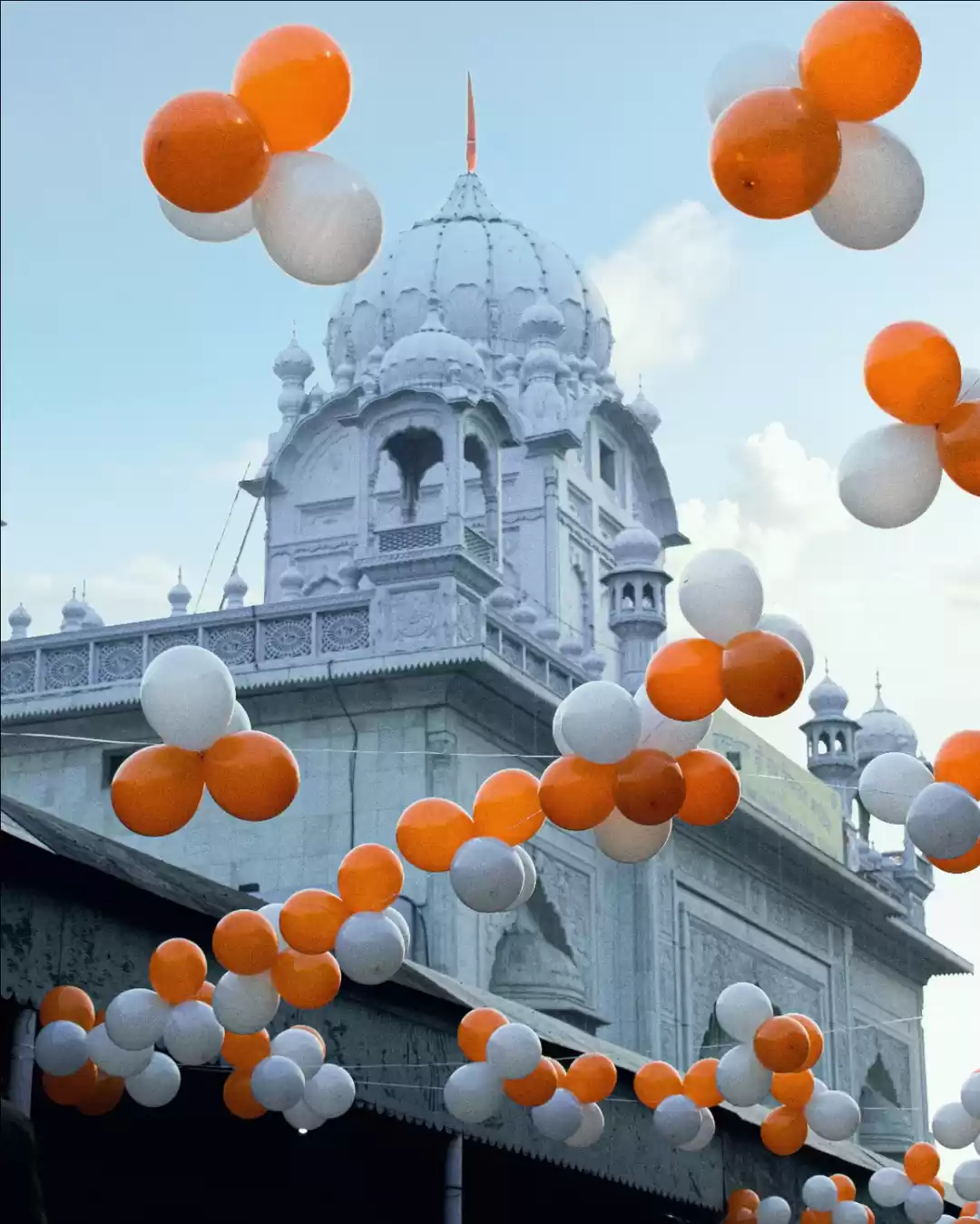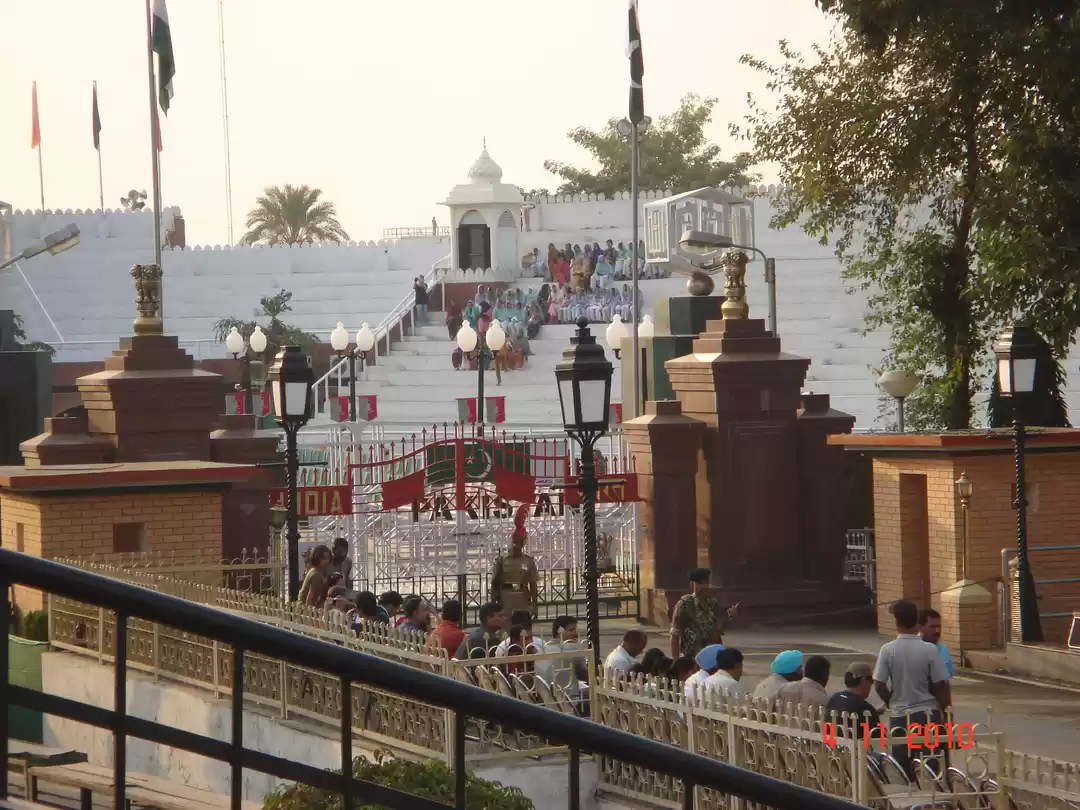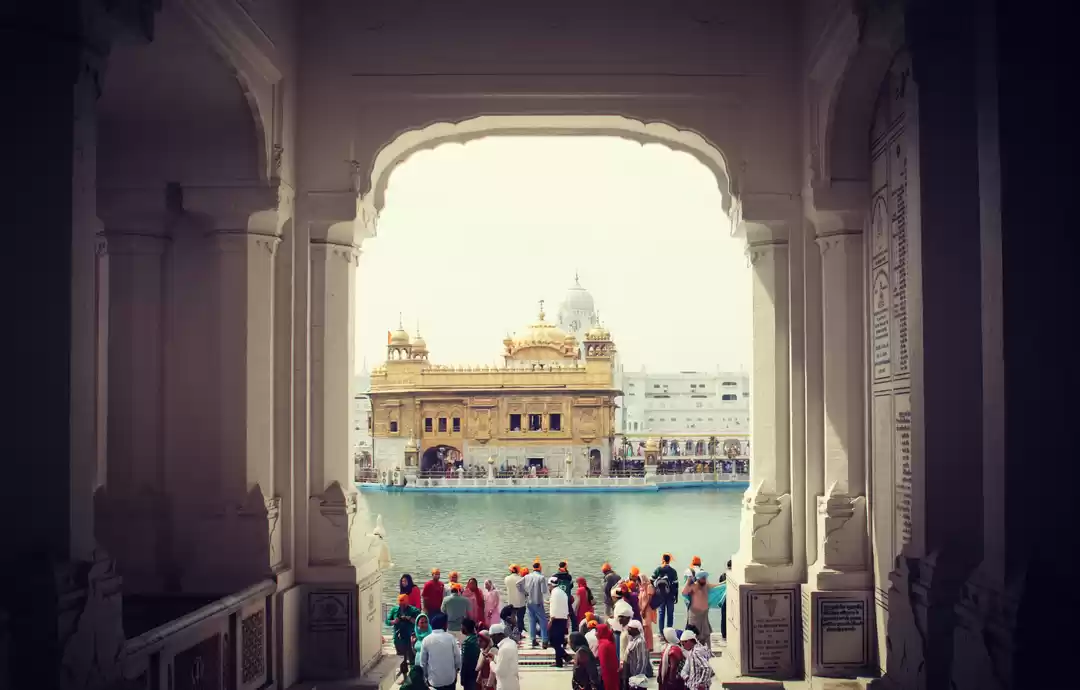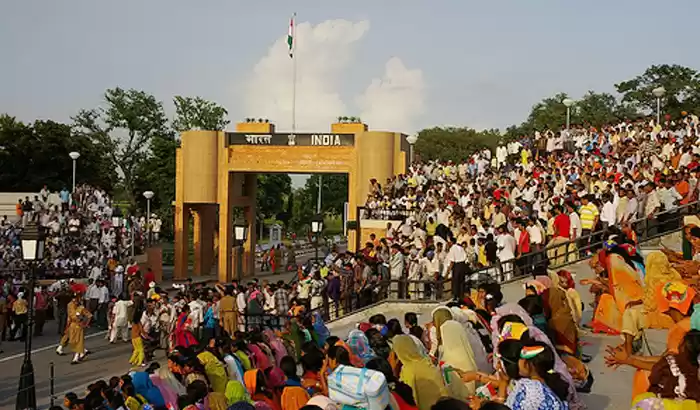


My trip to Amritsar last weekend was a much-awaited affair. Being from a Punjabi family I was given a list of “places you must visit” from reminiscent relatives, including the house of my great-grandfather in Canal Colony. It turns out that two days wasn’t quite enough to satisfy the likes of my family, but it was definitely an adventurous two days and the start of what I hope to be my tales of traveling around India. And finally reviving my blog.
The first sights of Punjab:
As most good travel tales begin, ours began on the train itself. Having decided to really live by the motto of budget traveling, we went second class. While that invited numerous concerns from most of my family members who were convinced I would regret my decision, I can not only prove them wrong, but also urge fellow student and early-working-life voyagers to do the same. (For the sake of experience, if you don’t barely earn a starting salary like us.)
After a night’s sleep amidst the passengers getting on and off and occasionally sitting in our berth, we awoke to the first glimpses of Punjab- the quintessential fields, the activity at the Ludhiana station a morning cup of chai, made with the rich Punjabi milk. On reaching our destination, we were greeted with the Punjabi autos at the station — they’re similar to the ones in Delhi, but bigger and more spacious, in which four of us, and our luggage comfortably fit.
Of Dhabas, and Ghee Galore:
I recently came across a phrase “to travel is to eat.” When in Amritsar, this is a mantra that you should embrace. Most of our spontaneous itinerary ended up revolving around our meals. This was established after our very first meal in Kesar da dhaba,which was recommended by a friend and is famous among all tourists and the locals. It’s an essential stop for all foodies and anyone who is looking for a hearty parantha-meal, or in our case a parantha-breakfast. If you’re near the Golden Temple area it’s walking distance, despite the rikshaw-wallas who will try to convince you otherwise. And given the size of theseparanthas and the amount of ghee that is used in Punjabi cooking, you could use the walk! Also be sure to order the lassi. Since I’m usually not a fan of the drink myself I first decided not to, but a sip from my friend’s glass changed that. This is no regular lasssi—the sweet, creamy and rich tasting milk that is used ensures that you will savour every sip.
Contrary to the popular stereotype, Amristar does not have a lot of non-vegetarian options. Surjeet Restauarant,which we were recommended is well-known mainly because it actually serves non-vegetarian food. However we also discovered that it’s a Lonely Planet recommended and has received some numerous food awards that were proudly displayed all over the restaurant, which only adds to it’s popularity. Definitely one of the more expensive options, but the fish fry, thetawa chicken and the daal will leave you with no regrets.
Like anyone visiting the city for the first time, we were keen to see the three historical sights that Amritsar is so famous for: Wagah Border, Golden Temple and Jallianwala Bagh.Our first afternoon was reserved for Wagah Border. While we were all keen to see the parade that is so widely spoken of, it wasn’t till I saw a sign that read: “Lahore: 500 km ahead” in the taxi and later “India, the largest democracy in the world, welcomes you!” at the actual site, that I was truly able to fathom the experience that awaited me. While the song and dance that takes place before the parade temporarily reduces intensity of the situation, the actual ceremony is a more solemn affair. You can’t help but feel a mix of emotions from pride, patriotism, nostalgia and remorse on seeing women soldiers opening the ceremony on the Indian side, the lowering of the Indian and Pakistani flags, and the momentary opening of the gates separating the two sides. When you actually see people from the Pakistani side sitting in front of you on the other side of the gate, you can’t help but wonder what is going on in their minds. As symbolic as the ceremony may be, it still forces you to think of the complex relationship we continue to share with our neighbours 60-odd years later. One of the more amusing takeaways from this experience was that the song “Pakistan Pakistan,” by Nusrat Fateh Ali Khan was stuck in our head for the next two days.
The Golden Temple: from dusk to dawn.
Seeing the Golden Temple once in Amritsar is simply not enough. If you want to experience it’s beauty, you need to see it in all lights. If you’re staying there for a night, find out what time the palki ceremony takes place (the exact time differs according to the season). In this ceremony, the Guru Granth Sahib is brought to it’s resting place. But the main attraction of the night was the structure itself, enclosed within the boundaries of four white walls around and situated in the middle of the pool of what is considered holy water. Though I couldn’t help notice it’s smaller in size than what one may expect after having seen dozens of postcards and photographs, it still manages to keep you in awe.
If you’re actually keen on going inside the temple, which you probably should do once during your trip, the morning palki may be a better time. Aim to be there before the sunrise, because that is an event you will want to witness. However, expect to wait a while before you can actually enter the temple. For us, being a Sunday might explain why experienced a massive, but also slightly rowdy and aggressive crowd. But then again, it is Punjab after all!
Another monument we were keen, but also slightly apprehensive to visit was Jallianwala bagh. While waking through a narrow passage where the open-firing began, which is the entrance to the memorial made gives you a slightly eerie feeling, most sightseers seemed almost overly carefree roaming around the memorial as though it was a playground, posing and smiling for photographs around the amar jyoti (eternal flame) that burns for the victims or the wall that still has the bullet shots from the deadly incident of 1919. The museum (where thankfully photography is also prohibited) also contains an impressive range of archives from the colonial era.
The old city charm: jutti markets and juicyjalebis
Apart from its monuments, memorials and larger tourist attractions, you will find that the Golden city has a lot more to offer as well. If Wagah Border, the Golden Temple and Jallianwalla bagh were the three highlights, then roaming the streets of old Amritsar was definitely the fourth. Having a local tour guide-cum-friend who offered to take us down these lanes and streets made the experience all the more enriching as she told us the history of these areas, of Crawling Lane, Katra Aluwhalia, showed us the forts that were built centuries ago, of which some remains still exist while the city around it has developed, and is now inhabited with small shops, food vendors and flourishing wholesale markets with jewellery, stainless steel bartans and more. Amidst all these lanes is the famousJalebi chowk. Though the name may be misleading, since it’s a standalone shop rather than a full street of Jalebi-wallas, these are without a doubt the juiciestjalebis. For Rs. 10 for a bowl full, you will definitely go for seconds. The last stop of our explorations was Hall Bazaar, where we shopped for the famous Amritsari juttis(shoes), bade farewell to our tour guide and headed home after one last ghee-drenchedthali meal at Kundan da dhaba.































